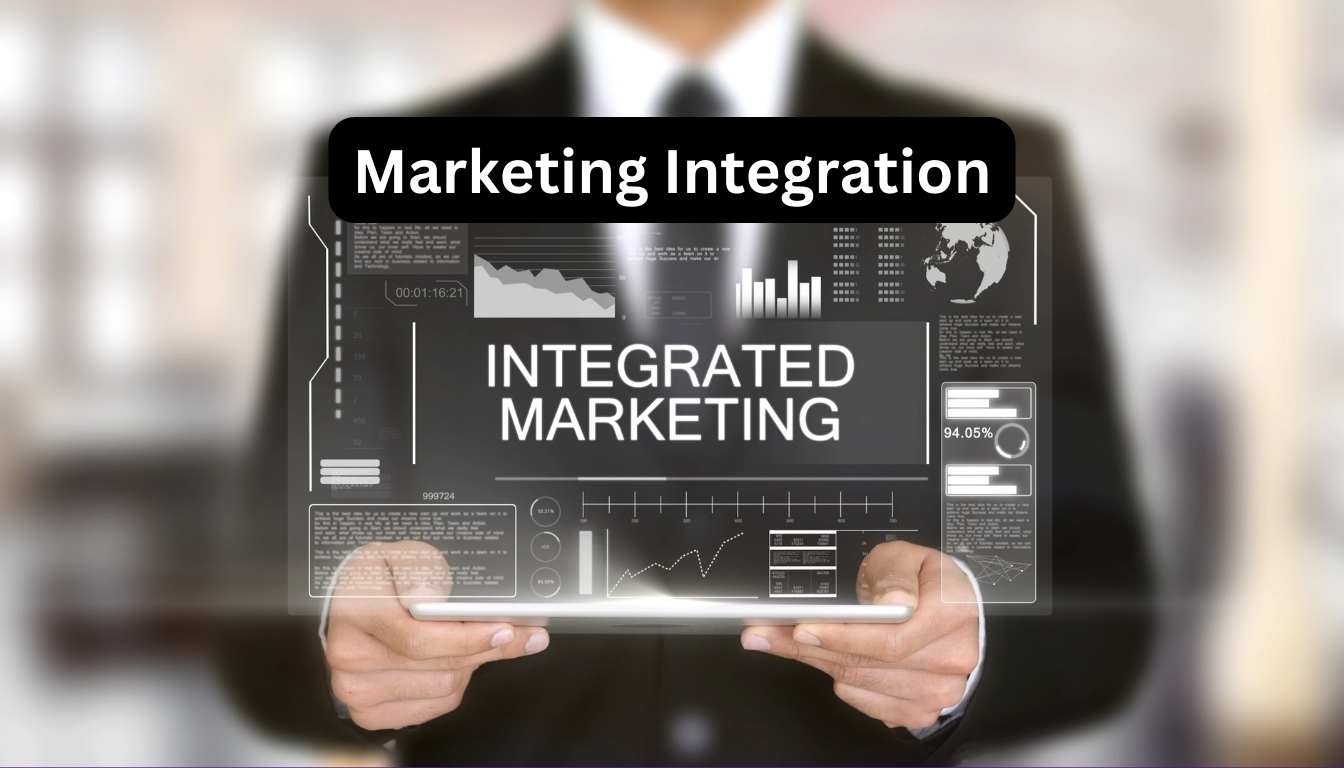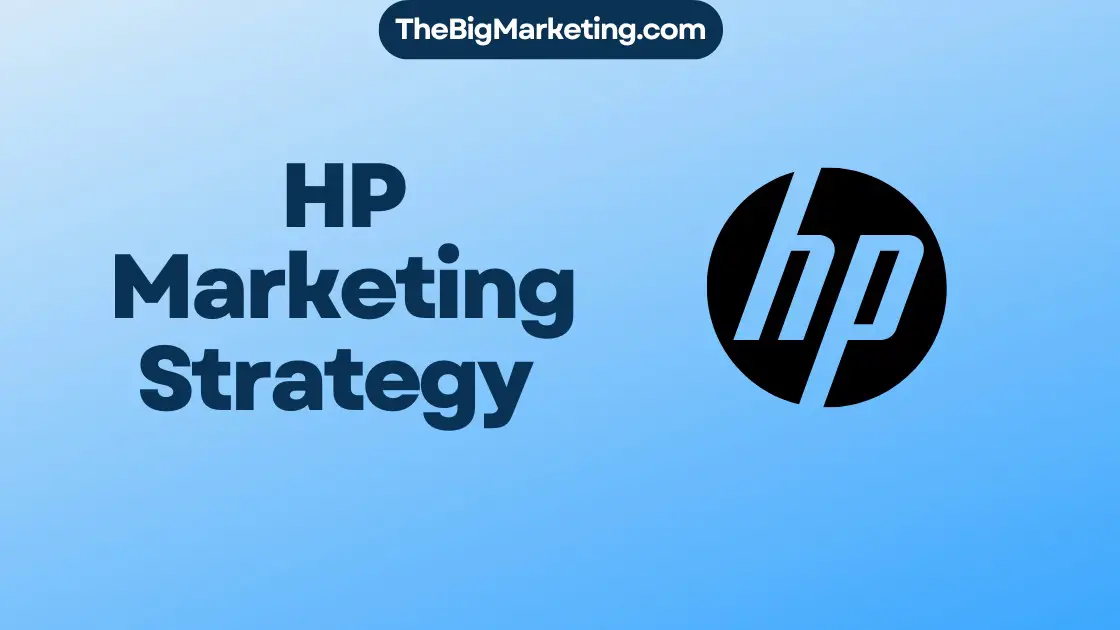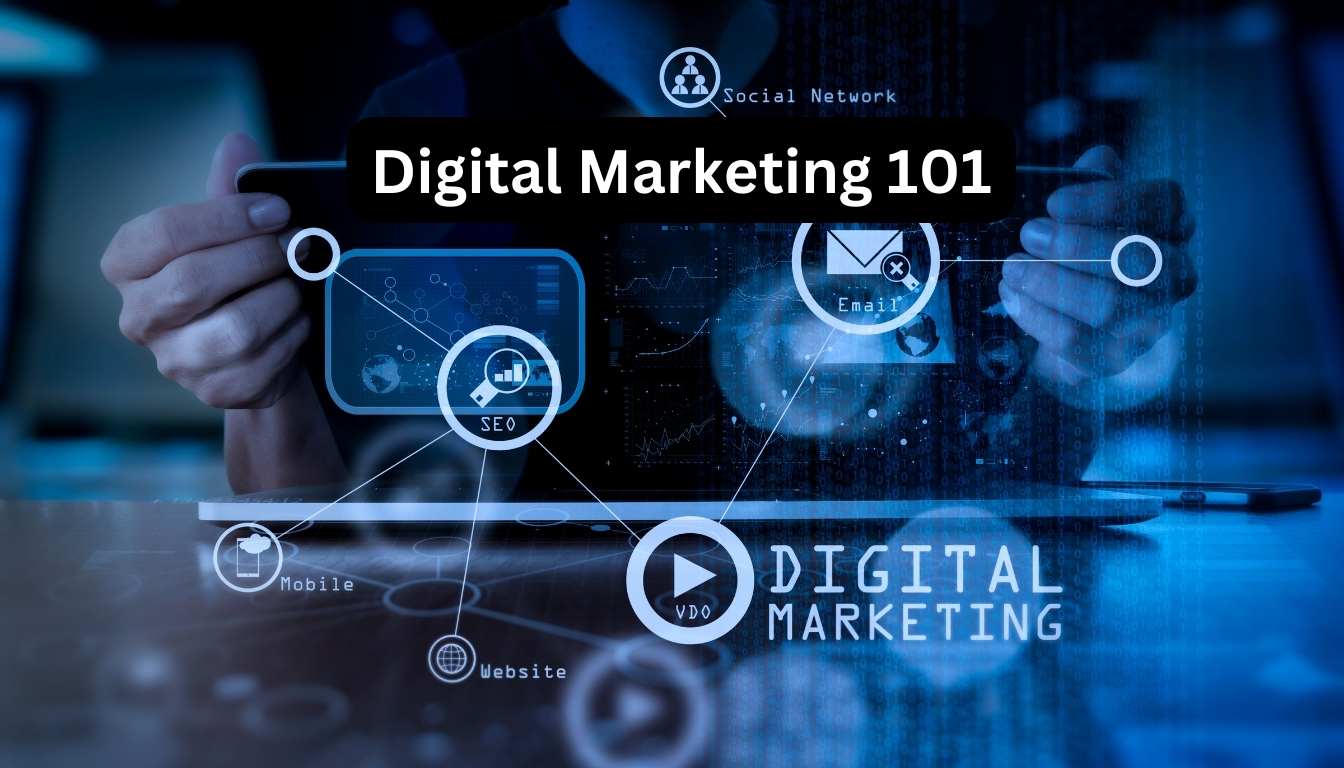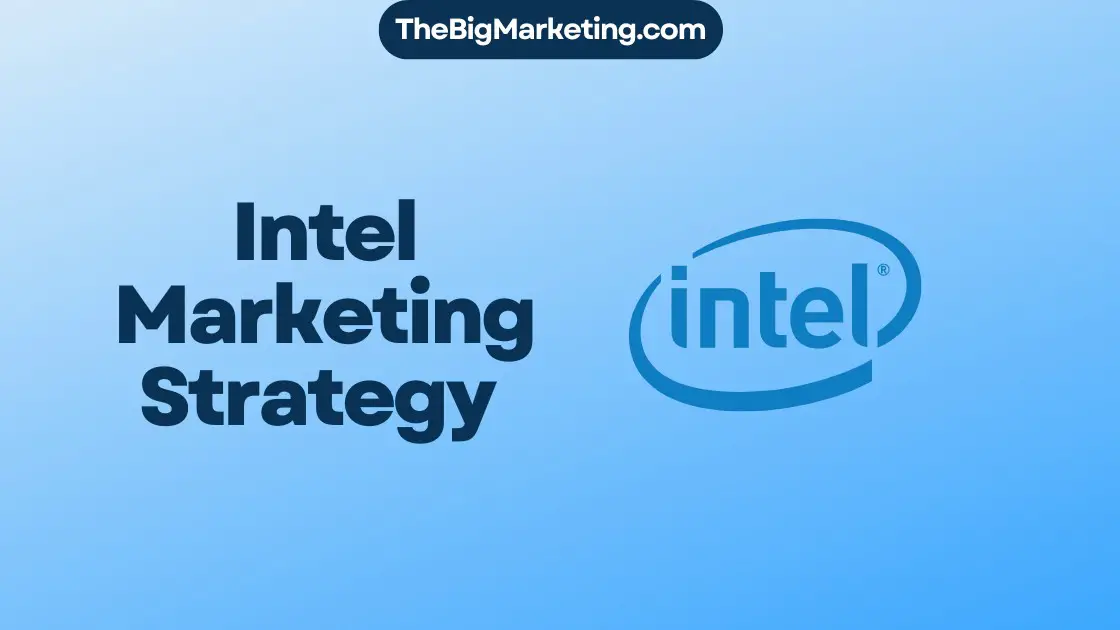In order to stand out in a competitive banking industry and attract customers in 2024, it is essential for banks to implement effective marketing strategies. By utilizing banking marketing tips and effective bank marketing tactics, banks can leverage digital marketing for banks to engage customers and boost their visibility online. In this article, we will explore the latest marketing strategies for banking that will help financial institutions innovate and engage customers effectively in 2024.
Key Takeaways:
- Implementing effective marketing strategies is crucial for banking institutions in 2024.
- Banking marketing tips and effective bank marketing tactics are essential for attracting customers.
- Leveraging digital marketing for banks can enhance visibility and customer engagement.
- Stay updated on the latest marketing trends to innovate in the competitive banking industry.
- Engaging customers effectively requires a comprehensive and strategic approach to banking marketing.
The Importance of Public Relations in Banking Marketing
Public relations (PR) plays a crucial role in banking marketing as it helps shape how the public perceives banks. In an industry where trust and credibility are paramount, maintaining a strong PR strategy is essential for banks to establish themselves as reliable, secure, and ethical financial institutions.
One key aspect of a successful PR strategy is transparency. Banks should prioritize open communication with their customers, providing regular updates and reports on banking services and performance. By doing so, banks can foster trust and confidence among their customer base, creating a positive perception of their brand.
Crisis management is another crucial element of an effective banking PR strategy. In an ever-changing landscape, security breaches and financial crises are unfortunate realities. However, how banks handle these situations can make or break their reputation. By addressing concerns promptly, sharing clear facts, and providing a roadmap for resolution, banks can mitigate the impact of such crises and reinforce their commitment to transparency and customer satisfaction.
Banks that prioritize PR and effectively communicate their values and commitment to their customers are more likely to be seen as reliable, secure, and ethical institutions. By building trust and transparency through PR efforts, banks can enhance their brand image, attract new customers, and retain existing ones.
Leveraging Thought Leadership in Banking Marketing
In the competitive banking industry, thought leadership has emerged as a powerful marketing trend. Thought leadership involves creating well-researched and authoritative content written by industry experts. By providing original thought leadership content, banks can enhance their visibility, credibility, and attract a wider audience. To successfully leverage thought leadership in banking marketing, it is essential for banks to combine content marketing with research strategies and stay updated on the latest banking trends.
The Benefits of Thought Leadership
Thought leadership content allows banks to establish themselves as industry leaders and subject matter experts. By offering valuable insights, analysis, and research-based content, banks can position themselves as credible sources of information. This helps in building trust with customers and potential prospects, who are more likely to engage with authoritative content.
Additionally, thought leadership content attracts readers, backlinks, and social shares, which are essential for enhancing visibility and improving search engine rankings. By consistently producing high-quality content, banks can establish themselves as go-to resources in the banking industry.
Content Formats for Thought Leadership
To effectively showcase their expertise, banks can use a variety of content formats for thought leadership. Some popular formats include:
- Articles: In-depth articles that provide detailed insights into industry trends and developments.
- Reports: Research-based reports that analyze market trends and offer actionable recommendations.
- Infographics: Visual representations of data and statistics that simplify complex information.
- Videos: Engaging videos that explain complex concepts or highlight industry insights.
- Charticles: Content that combines charts, graphs, and text to present information in a visually appealing way.
By utilizing various content formats, banks can cater to different preferences and engage with a wider audience.
Thought Leadership and Banking Trends
Staying updated on the latest banking trends is crucial for effective thought leadership. By identifying emerging trends and providing insights on how they impact the industry, banks can further establish their credibility as thought leaders. Examples of current banking trends include:
- Digitization of banking services
- Personalized customer experiences
- Open banking and collaboration
- Data analytics and AI in banking
- Financial inclusion and accessibility
Thought leadership content that addresses these trends can attract a broader audience, generate interest, and position banks as innovative leaders in the industry.
The Role of Credibility in Thought Leadership
For thought leadership to be effective, credibility is key. Banks should ensure that their content is well-researched, accurate, and based on reliable sources. By providing data-driven insights, citing reputable studies, and showcasing industry expertise, banks can establish their credibility and gain the trust of their audience.
Moreover, thought leadership should be consistent and ongoing. Banks should regularly publish content that demonstrates their expertise and commitment to staying ahead of the curve in the banking industry. This helps in building a loyal audience who sees the bank as a trustworthy source of information.
Overall, leveraging thought leadership in banking marketing is an effective strategy for boosting visibility, credibility, and audience engagement. By creating well-researched and authoritative content, banks can establish themselves as industry leaders and attract a wider audience.
| Benefits of Thought Leadership | Content Formats for Thought Leadership |
|---|---|
|
|
The Role of Bank Branches in Banking Marketing
Despite the rise of online banking and mobile apps, bank branches are reemerging as a critical component of banking marketing strategies. Modern bank branches are reinventing themselves as versatile spaces that offer customers more than just traditional banking services. They are now incorporating interactive kiosks, digital financial education modules, and personalized financial solutions.
The personalized customer experience provided by bank branches cannot be replicated through digital channels alone. In-person interactions and consultations with bank representatives are essential to building trust and understanding each customer’s unique financial needs. Bank branches offer a welcoming environment where customers can have face-to-face discussions, ask questions, and receive tailored guidance.
Interactive kiosks in bank branches provide customers with self-service options, allowing them to complete various transactions efficiently. These kiosks offer functionalities such as cash deposits, account transfers, and bill payments. They provide a hands-on experience and empower customers to manage their finances conveniently.
Digital financial education modules within bank branches equip customers with the knowledge and tools to make informed financial decisions. These modules can cover topics such as budgeting, savings strategies, investment options, and retirement planning. By providing access to digital educational resources, bank branches empower customers to enhance their financial literacy and achieve their financial goals.
Bank branches can further enhance the customer experience by offering personalized financial solutions. Whether it’s discussing loan options, creating customized investment portfolios, or providing tailored advice on mortgage plans, the in-person interaction at bank branches adds a personal touch that customers often value.
Benefits of Bank Branches in Banking Marketing
Bank branches provide several advantages for banking marketing:
- Personalized Customer Experience: Bank branches allow for personalized interactions that build trust and cater to each customer’s specific financial needs.
- In-Person Marketing: Interactions in bank branches provide opportunities for direct marketing and relationship building.
- Interactive Kiosks: Kiosks offer self-service options and a convenient way for customers to complete transactions quickly.
- Digital Financial Education: Educational modules within bank branches empower customers to enhance their financial knowledge and make informed decisions.
Bank branches continue to play a vital role in banking marketing, complementing digital channels and providing a personalized touch. To embrace this trend effectively, banks should focus on engaging with customers, suggesting personalized solutions, and offering educational materials.
Banks can offer the following educational materials in bank branches:
- Pamphlets
- Booklets
- Video tutorials
- Webinars
The Power of Digital Banking in Banking Marketing
Digital banking has revolutionized the way customers access and manage their finances. With the advent of online banking and mobile apps, customers can conveniently perform transactions, check balances, and access a range of banking services anytime, anywhere. The rise of digital banking has also opened up new opportunities for banks to enhance their marketing strategies and engage customers effectively.
One of the key advantages of digital banking in marketing is the ability to analyze customer behavior, preferences, and needs. Through digital channels, banks can collect valuable data about their customers, such as transaction history, spending patterns, and financial goals. This data enables banks to create personalized marketing campaigns that resonate with individual customers, increasing the likelihood of conversion and customer loyalty.
Moreover, digital banking allows for real-time interactions with customers. Banks can engage with customers through various digital channels, including mobile apps, email, social media, and web platforms. This enables banks to provide instant customer support, address inquiries and concerns, and deliver personalized offers or recommendations in real-time. By fostering real-time interactions, banks can build stronger relationships with customers, enhancing customer satisfaction and loyalty.
| Benefits of Digital Banking in Banking Marketing |
|---|
| Convenience for customers |
| Personalized marketing campaigns |
| Real-time interactions with customers |
| Increased customer satisfaction and loyalty |
In order to leverage the power of digital banking in their marketing efforts, banks should utilize multiple digital channels to reach their target audience. Mobile apps, in particular, have emerged as a popular means of engaging with customers due to their ease of use, accessibility, and on-the-go functionality. Banks can also utilize email marketing and social media platforms to deliver targeted marketing messages and engage with customers in a more personal and interactive way.
Additionally, it is important for banks to provide educational content within their digital banking platforms. This content can help customers better understand the features and benefits of digital banking, empowering them to make the most of the available services. Educational content can take the form of tutorials, guides, videos, or infographics, providing customers with valuable insights and knowledge.
The Future of Digital Banking
The future of digital banking looks promising, with continuous advancements in technology. As artificial intelligence (AI) and machine learning continue to evolve, banks can explore innovative ways to enhance the digital banking experience. AI-powered chatbots, for instance, can personalize customer interactions, provide instant support, and offer tailored recommendations based on individual preferences.
Furthermore, the integration of data analytics and AI can empower banks to further optimize their marketing efforts. By analyzing large volumes of customer data, banks can gain deep insights into customer preferences, segment their audience more effectively, and deliver hyper-targeted marketing campaigns. This holistic approach enables banks to foster stronger connections with their customers and drive long-term business growth.
In conclusion, digital banking has become a critical tool in banking marketing. By embracing digital channels, leveraging customer data, and providing personalized experiences, banks can enhance their marketing strategies, strengthen customer relationships, and stay ahead in today’s digital age.
Leveraging Customer Data in Banking Marketing
Customer data is a valuable asset for banking marketing as it allows banks to gain valuable insights into their customer base. By analyzing customer data, banks can identify patterns, preferences, and behaviors, enabling them to create meaningful customer segments and launch targeted campaigns that resonate with their audience.
The Power of Customer Segmentation
Customer segmentation is a critical strategy that banks can use to tailor their marketing efforts to specific groups of customers. By dividing the customer base into segments based on demographics, behaviors, and preferences, banks can create personalized marketing campaigns that address the unique needs of each segment.
For example, a bank may discover through customer data analysis that one segment consists of young professionals who are interested in investment opportunities. With this knowledge, the bank can design targeted campaigns that highlight investment products and services, offering tailored solutions to meet the needs of this specific group.
Targeted Campaigns for Improved Results
By leveraging customer data, banks can create targeted marketing campaigns that deliver personalized and relevant messages to their customers. With a deeper understanding of customer preferences and interests, banks can craft compelling offers, promotions, and product recommendations that are more likely to resonate with their audience.
For instance, a bank might identify through data analysis that a group of customers frequently uses their mobile banking app for bill payments. In response, the bank can launch a targeted campaign to promote a new feature that simplifies bill payments, offering incentives or rewards to encourage adoption and increase engagement.
The Role of Advanced Analytics and Machine Learning Models
Advanced analytics and machine learning models play a crucial role in leveraging customer data for banking marketing purposes. By using these technologies, banks can extract valuable insights from vast amounts of data, enabling them to anticipate customer needs, identify cross-selling opportunities, and reduce customer churn.
For example, through the use of machine learning models, banks can predict which customers are more likely to be interested in specific products or services based on their past behavior and patterns. With this information, targeted marketing campaigns can be designed to increase the chances of successful conversions.
Prioritizing Data Security and Compliance
While leveraging customer data offers immense opportunities for banks, it is crucial to prioritize data security and ensure compliance with data protection regulations. Banks must implement robust data security measures to protect sensitive customer information from unauthorized access or breaches.
Furthermore, banks must comply with relevant data protection laws, such as the General Data Protection Regulation (GDPR) in the European Union or the California Consumer Privacy Act (CCPA) in the United States. Compliance ensures that customer data is collected, stored, and used ethically and transparently.
By leveraging customer data responsibly, banks can enhance customer service, drive growth, and optimize their marketing efforts. With a solid foundation in data analytics, banks can make informed decisions, deliver personalized experiences, and build stronger relationships with their customers.
The Importance of SEO in Banking Marketing
Search engine optimization (SEO) is a crucial aspect of banking marketing as it helps banks rank higher in search results and drive organic traffic to their websites. By implementing effective SEO strategies, banks can enhance their online visibility and attract potential customers. Here are some key components of SEO that banks should focus on:
1. Creating Compelling Content
To improve search engine rankings, banks should prioritize creating up-to-date, authoritative, and compelling content. This includes utilizing various formats such as videos, blogs, eBooks, and infographics. By providing valuable and engaging content, banks can establish themselves as trusted sources of information in the industry.
2. Conducting Keyword Research
Keyword research is essential for optimizing website content and meta tags. By identifying relevant keywords and incorporating them strategically throughout their online presence, banks can increase the likelihood of appearing in search results for relevant queries. This helps drive targeted organic traffic to their websites.
3. Optimizing Website Structure and Performance
Ensuring a well-structured website with easy navigation and fast loading times is crucial for SEO. Banks should optimize their website structure by organizing content into logical categories and using appropriate headings. Additionally, optimizing images, improving page load speed, and implementing mobile responsiveness are important factors that impact search engine rankings.
4. Building High-Quality Backlinks
Backlinks from reputable websites are an essential aspect of SEO. Banks should prioritize building high-quality backlinks that demonstrate their credibility and authority in the banking industry. This can be achieved through guest blogging, collaborating with industry influencers, and engaging in relevant online communities.
5. Utilizing Local SEO
For banks with physical branches, optimizing for local SEO is crucial to attract customers in specific geographic regions. Banks should ensure accurate and consistent NAP (Name, Address, Phone) information across all platforms and create location-specific landing pages. This helps potential customers find relevant information when searching for banking services in their local area.
By implementing effective SEO strategies, banks can improve their online visibility, attract organic traffic, and enhance their overall marketing efforts.
| Benefits of SEO in Banking Marketing | Challenges of SEO in Banking Marketing |
|---|---|
|
|
Effective Social Media Marketing in Banking
Social media marketing is a powerful strategy for banks to engage with their target audience and build their brand reputation. Platforms like Instagram and LinkedIn offer unique opportunities to connect with different demographics, allowing banks to tailor their marketing efforts accordingly.
Instagram: Showcasing Creativity Through Visual Content
Instagram is a popular social media platform that enables banks to showcase their products and services in a creative and visually appealing way. Through eye-catching images and videos, banks can capture the attention of a younger demographic who are active on the platform. By utilizing visual content, such as infographics and promotional videos, banks can effectively communicate their key messages and offerings to their target audience on Instagram.
LinkedIn: Building a Professional Image and Attracting Corporate Clients
LinkedIn, on the other hand, provides a professional networking platform for banks to establish their expertise and attract corporate clients. By publishing thought leadership articles, insightful industry updates, and relevant content, banks can position themselves as trusted authorities in the financial sector. LinkedIn also enables banks to connect with potential clients, foster professional relationships, and expand their professional network.
| Benefits of Instagram | Benefits of LinkedIn |
|---|---|
| Target a younger demographic | Connect with professionals and corporate clients |
| Showcase products and services creatively | Elevate brand reputation and credibility |
| Engage with followers through visual content | Share thought leadership content and industry insights |
| Drive brand awareness and reach | Expand professional network and establish connections |
By effectively leveraging these social media platforms, banks can reach their target audience, drive engagement, and strengthen their brand presence in the digital landscape. It is important for banks to develop a cohesive social media marketing strategy that aligns with their overall marketing goals and resonates with their target audience. By consistently producing high-quality content and engaging with their followers, banks can establish themselves as industry leaders and build lasting relationships with their customers.
Harnessing the Power of Email Marketing in Banking
Email marketing is a powerful tool for banking marketing, allowing banks to send targeted and personalized campaigns to their customers. By utilizing personalized emails, banks can enhance customer engagement and satisfaction, leading to increased customer retention. Educational content, promotions, and tailored recommendations can be delivered directly to customers’ inboxes, providing relevant and valuable information. Banks should focus on building and maintaining customer relationships through effective email marketing strategies.
To make the most of email marketing in the banking industry, here are some key strategies to consider:
A. Segment Your Email Lists
Segmenting your email lists based on customer demographics, behaviors, and preferences allows you to target specific groups with personalized content. By tailoring your messages to the specific needs and interests of each segment, you can increase customer engagement and drive better results.
B. Craft Compelling Subject Lines
The subject line of your email plays a crucial role in grabbing the reader’s attention and encouraging them to open the message. Craft compelling subject lines that are concise, clear, and enticing to increase the open rates of your email campaigns.
C. Personalize the Content
Personalization goes beyond adding the recipient’s name in the email. Customize the content based on the customer’s past interactions, preferences, and behaviors. This could include personalized product recommendations, tailored offers, or relevant educational content.
D. Use Dynamic Content
Dynamic content allows you to create email templates with interchangeable content blocks. These blocks can be customized based on the recipient’s profile or behavior. By using dynamic content, you can create personalized emails at scale, saving time while still delivering relevant messages.
E. Optimize for Mobile Devices
Given the popularity of smartphones and tablets, it’s essential to ensure that your emails are optimized for mobile devices. Responsive email design and mobile-friendly layouts will ensure a seamless experience for users, regardless of the device they use to access their emails.
By implementing these strategies, banks can maximize the effectiveness of their email marketing campaigns, fostering customer engagement, and driving customer retention.
The Impact of AI in Banking Marketing
The rapid advance of artificial intelligence (AI) presents opportunities for banks to revolutionize their marketing strategies. With the power of AI, banks can harness innovative technologies to enhance customer experiences, streamline operations, and improve business outcomes. In the realm of banking marketing, AI-driven solutions such as chatbots and predictive analytics are transforming the way banks engage with customers and make data-driven decisions.
AI-powered chatbots and virtual assistants are becoming increasingly popular in customer service as they offer real-time support and personalized interactions. These AI-driven conversational agents can handle customer inquiries, provide product recommendations, and even assist with transactions. By leveraging chatbots, banks can streamline customer interactions, reduce response times, and free up human resources to focus on more complex tasks.
Furthermore, predictive analytics driven by AI play a vital role in unlocking valuable insights from vast amounts of customer data. By analyzing historical data, AI algorithms can identify patterns, anticipate customer needs, and enable banks to deliver personalized marketing campaigns. Adopting predictive analytics enables banks to target the right customers with relevant offers, resulting in higher conversion rates and increased customer satisfaction.
AI also plays a crucial role in fraud detection and risk management for banks. With sophisticated algorithms, AI systems can analyze and flag potentially fraudulent transactions, helping banks proactively safeguard their customers’ assets. By leveraging AI technologies, banks can enhance the security of financial transactions and protect against evolving fraud techniques.
Moreover, AI empowers banks to achieve greater operational efficiency by automating manual processes, optimizing resource allocation, and reducing costs. From automating data entry to streamlining regulatory compliance, AI technologies enable banks to streamline operations and improve efficiency across various departments. By implementing AI-powered solutions, banks can enhance productivity, reduce errors, and ultimately improve the overall customer experience.
Overall, the impact of AI in banking marketing is transformative. From intelligent chatbots to predictive analytics, AI technologies empower banks to engage effectively with customers, drive targeted marketing campaigns, enhance fraud detection, and improve operational efficiency. By embracing AI, banks can not only position themselves as tech-savvy entities but also gain a competitive edge in the ever-evolving landscape of banking marketing.

| Benefits of AI in Banking Marketing | Examples |
|---|---|
| Enhanced customer experience | AI-powered chatbots providing real-time support |
| Personalized marketing campaigns | Predictive analytics analyzing customer data |
| Fraud detection and risk management | AI algorithms flagging potentially fraudulent transactions |
| Operational efficiency | AI automating manual processes and optimizing resource allocation |
Example: AI-powered Chatbot in Banking Marketing
ABC Bank, a leading financial institution, implemented an AI-powered chatbot on their website to provide personalized support to customers. The chatbot utilizes natural language processing and machine learning algorithms to understand customer inquiries accurately. It can assist with account information, balance inquiries, and even offer tailored product recommendations. The AI chatbot has significantly reduced customer wait times, improved customer satisfaction, and allowed ABC Bank to allocate human resources more effectively.
The Future of Banking Marketing: Personalization
Personalization is becoming increasingly important in banking marketing as it allows banks to deepen customer connections and drive growth. By leveraging data analytics and AI, banks can gain insights into individual customers’ preferences, behaviors, and needs. This information can be used to craft highly targeted and personalized marketing messages that resonate with specific customer segments. By personalizing communication channels, content, and offers, banks can create a more relevant and engaging experience for customers, enhancing customer satisfaction and fostering brand loyalty.
Benefits of Personalization in Banking Marketing
- Enhanced Customer Connections: Personalization allows banks to connect with customers on a deeper level by understanding their unique needs and preferences.
- Increased Customer Satisfaction: By delivering relevant and personalized offers, banks can improve customer satisfaction and loyalty.
- Targeted Messaging: Personalized marketing messages resonate better with customers, increasing the effectiveness of campaigns and driving higher engagement.
- Improved Customer Experience: Personalization helps create a tailored experience for customers, making them feel valued and understood.
- Increase in Cross-Selling and Upselling Opportunities: Personalized offers and recommendations can lead to increased cross-selling and upselling opportunities, driving revenue growth for banks.
Implementing Personalization in Banking Marketing
Implementing personalization in banking marketing requires a strategic approach and the right technology infrastructure. Here are some steps banks can follow:
- Collect Relevant Data: Banks need to collect and analyze customer data to gain a comprehensive understanding of their preferences, behaviors, and needs. This can be done through various channels such as online interactions, transaction histories, and customer surveys.
- Utilize Data Analytics: By leveraging data analytics tools, banks can uncover valuable insights from customer data and identify patterns and trends that can inform personalized marketing strategies.
- Segment Customers: Once the data has been analyzed, banks can segment customers into different groups based on their characteristics, preferences, or behavior. This segmentation allows banks to deliver targeted messages and offers to specific customer segments.
- Create Personalized Messaging: With customer segments identified, banks can create personalized marketing messages that speak directly to the specific needs and interests of each segment.
- Optimize Communication Channels: Banks should optimize their communication channels, such as emails, mobile apps, and websites, to deliver personalized messages and offers in a seamless and user-friendly manner.
- Continuously Test and Refine: Personalization strategies should be continuously tested and refined based on customer feedback and analytics data. This iterative approach ensures that the personalization efforts are effective and aligned with evolving customer needs.
In conclusion, personalization is a key aspect of future banking marketing strategies. By leveraging data analytics and AI, banks can create tailored experiences for customers, improve customer satisfaction, and drive growth. The implementation of personalization requires collecting relevant data, utilizing data analytics tools, segmenting customers, creating personalized messaging, optimizing communication channels, and continuously testing and refining strategies. By embracing personalization, banks can build stronger customer relationships, increase engagement, and stay ahead in the competitive banking industry.
Conclusion
In conclusion, implementing effective marketing strategies is crucial for banking institutions to innovate and engage customers effectively in 2024. By leveraging the latest banking marketing trends such as public relations, thought leadership, digital banking, leveraging customer data, SEO, social media marketing, email marketing, AI, and personalization, banks can boost their visibility, build trust with customers, and drive growth in a competitive banking industry. Embracing digital transformation and utilizing data-driven strategies will be key to staying ahead in the evolving landscape of banking marketing.
FAQ
What are some effective marketing strategies for banking in 2024?
Effective marketing strategies for banking in 2024 include utilizing digital marketing, leveraging customer data, implementing SEO techniques, embracing social media marketing, harnessing the power of email marketing, and incorporating AI technologies for personalized experiences.
How important is public relations in banking marketing?
Public relations plays a crucial role in banking marketing as it helps shape public perception and builds trust. It involves emphasizing transparency, providing regular updates and reports, and implementing crisis management strategies to mitigate the impact of security breaches and financial crises on a bank’s reputation.
How can thought leadership be leveraged in banking marketing?
Thought leadership can be leveraged in banking marketing by creating well-researched content written by industry experts. By providing original thought leadership content, banks can attract readers, backlinks, and social shares, enhancing their visibility and credibility.
What is the role of bank branches in banking marketing?
Bank branches are making a comeback as an important aspect of banking marketing strategies. Modern bank branches are transforming into versatile places for customers by offering interactive kiosks, digital financial education modules, and personalized financial solutions, providing a personalized customer experience that cannot be matched by digital strategies alone.
How does digital banking impact banking marketing?
Digital banking allows banks to analyze customer behavior, preferences, and needs, enabling them to create personalized marketing campaigns and provide real-time interactions with customers. It offers the convenience of accessing and managing finances from anywhere, anytime, and helps improve operational efficiency and customer satisfaction.
How can customer data be leveraged in banking marketing?
Customer data is a valuable asset for banking marketing as it allows banks to create meaningful customer segments and launch targeted campaigns. By leveraging customer data, banks can enhance customer service, drive growth, and optimize their marketing budgets by implementing advanced analytics and machine learning models.
How important is SEO in banking marketing?
SEO is crucial in banking marketing as it helps banks rank higher in search results and drive organic traffic to their websites. By creating up-to-date, authoritative, and compelling content and strategically incorporating keywords, banks can improve their visibility and attract potential customers.
What is the role of social media marketing in banking?
Social media marketing is an effective strategy for banking as it allows banks to engage with different demographics. Platforms like Instagram and LinkedIn offer unique opportunities to showcase products and services creatively, target specific demographics, build brand reputation, and attract corporate clients through content marketing and professional networking.
How does email marketing benefit banking marketing?
Email marketing is a powerful tool for banking marketing as it allows banks to send targeted and personalized campaigns to customers. By delivering relevant and valuable information directly to inboxes, banks can enhance customer engagement, satisfaction, and retention, building and maintaining strong customer relationships.
How does AI impact banking marketing?
The rapid advance of artificial intelligence presents opportunities for banks to revolutionize their marketing strategies. AI-powered chatbots and virtual assistants provide real-time support and streamline customer inquiries, while predictive analytics driven by AI help banks analyze customer data, anticipate needs, and create highly targeted marketing campaigns. AI also enhances fraud detection, risk management, and operational efficiency.
Why is personalization important in banking marketing?
Personalization allows banks to deepen customer connections and drive growth. By leveraging data analytics and AI, banks can gain insights into individual customers’ preferences, behaviors, and needs, and use this information to craft highly targeted and personalized marketing messages. Personalization creates a more relevant and engaging experience for customers, enhancing customer satisfaction and fostering brand loyalty.







